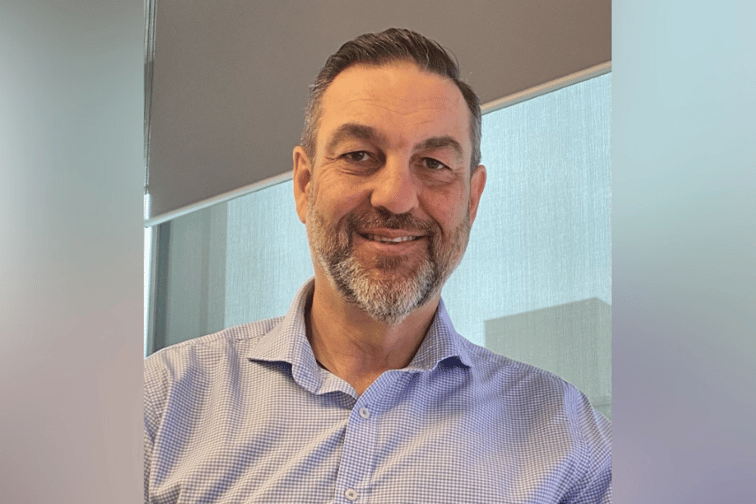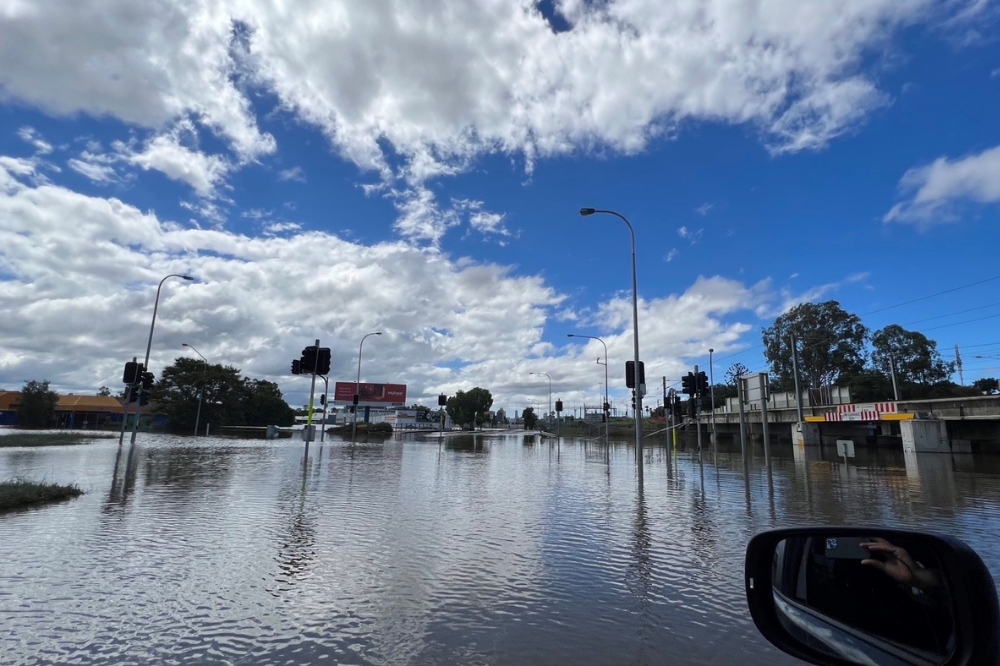

Across Australia’s east coast, the rain keeps pouring and the flooding continues. Major flood warnings were issued Wednesday for Sydney’s Hawkesbury and Nepean Rivers. In the Brisbane area, where the floodwaters were subsiding, more storms were expected. In Lismore and Ballina, record water levels still submerge many areas and thousands of residents are unable to return to their homes.
“I’d be lying if I said the emotional strain of handling events of this nature didn’t impact me,” said Rob Blunden (pictured above), chartered loss adjuster for Crawford & Company Australia.
“In this job you come face to face with people whose lives have been devastated, they’ve lost everything and you feel for them,” he said.
Loss adjusters are employed by insurance companies to investigate and assess the claims of policyholders. Crawford is a global provider of these claims management services.
Blunden is currently in Brisbane but he’s monitoring the Lismore situation. His picture, below, of Brisbane’s Rocklea neighbourhood gives an idea of the extent of the flooding.

Crawford is waiting for Lismore’s floodwaters to subside so it can safety deploy adjusters there.
“Certainly, the flooding in Lismore is the worst that has been experienced in that localised area,” he said.
The local Wilsons River peaked at over 14 metres, more than three metres higher than previous peak levels.
“We’ve heard politicians and others use the term ‘unprecedented’, and as someone working closely with this situation, who has seen a lot of these types of disasters, I can 100% confirm this,” said Blunden.
He said it’s a devastating blow to Lismore, its people and businesses.
“We are dealing with everything from flooding of car yards and showrooms, to banks, restaurants, logistical facilities, to small businesses and people’s homes,” said Blunden.
For businesses, there are also business interruption (BI) claims.
“The business interruption side of things is a very specialised skill set and our colleagues in Crawford Forensic Accounting Services are expert at BI claims,” he said.
“Above all, we aim to prioritise the urgent repairs through our very efficient triage process,” added Blunden.
That’s where he comes in.
Dealing with natural catastrophes (CATs) is one of the things Crawford is best known for and the company, he said, maintains a constant state of readiness.
“We have a full time CAT Leader who is supported by a swag of infrastructure not just in Australia, but around the globe,” he said.
Blunden said the logistical coordination required to go into an area like Lismore is “huge.”
“The greater the geographical spread of the flood, the more challenging it becomes, because local residents need to be housed too as they have lost their vehicles and their homes. As you can imagine, both accommodation and cars are at a premium,” he said.
Once Blunden gets the call, he does some personal research about the event and the impacts.
“Then my mind turns to what safety equipment and clothing will I need, and how the customers that I’ll be meeting will be coping psychologically,” he said.
Then he starts to think about the policies that are likely to apply to the losses and familiarises himself with common clauses and exclusions.
“Crawford has many different insurer clients and all policies are different. It’s therefore really important to be on top of my game in terms of my knowledge,” he said.
Another very important part of his prep, he said, is considering what other expert advice he might need.
“Do I need engineers, structural, civil, hydrologists, restoration experts, forensic accountants, equipment specialists? I need to know who I have access to at the location of the event – fortunately Crawford employs a lot of these people – we have forensic engineers, building consultants, forensic accountants and managed building repair services,” he said.
Once he’s on the scene there can be numerous challenges stopping his claims investigations.
“When it comes to floods, getting around is probably the biggest challenge of all,” he said.
Once floodwaters have subsided there’s still the difficulty of negotiating damaged roads and infrastructure.
“It is not unusual for access to remote flood affected areas to be cut off for over a month after an event of this nature, while we wait for flood waters to subside,” he noted.
However, he said, there’s plenty to get on with.
“There are parts of towns we can get to, preparation phone calls we can make, plus a whole swag of technologies that enable us to see impacted areas without actually being there in person,” said Blunden.
For example, he said, drones are used to photograph damaged areas from the air.
“Crawford also has an app called YouGoLook which guides policyholders step-by-step to document their own claims. This is really useful in speeding up the handling of claims and getting policyholders back to normal as soon as possible, especially when there is significant volume of claims like we are currently experiencing,” he said.
Blunden can also do virtual inspections with a tool called Video Connect.
“So losses can be fully assessed virtually by our qualified loss adjusters – this isn’t always appropriate for every claim, but we certainly have this capability and again this can help kick start the process when access to flood areas is difficult,” he said.
There’s also a portal where the insurers’ customers can upload relevant photos and videos.
Once the claims start to come in, there’s also the technologies behind the scenes.
“I think this is an area where Crawford definitely has the edge on our competitors – as a company with operations in 70 countries, investing in tech is something that’s taken pretty seriously,” he said.
Blunden says one big plus about his work, despite its challenges, is that he can actually provide help.
“So many people see these images on TV and feel helpless – they want to help, but they don’t know how. I get to go to work each day, and help people back into their homes, get their businesses open again – that’s a satisfying feeling and a great sense of achievement,” he said.
